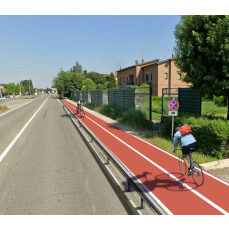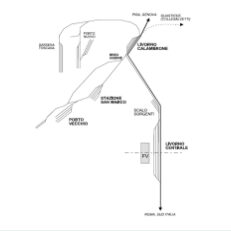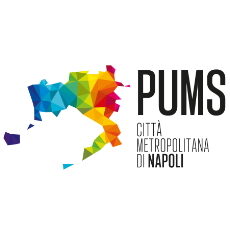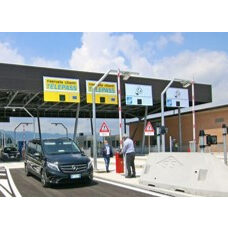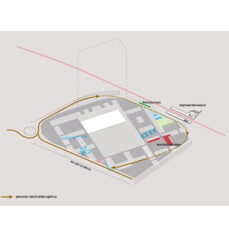- All
- African projects
- assessment
- assessment selected projects
- Assessment selected projects 2
- Assessment selected projects 3
- Assessment selected projects 4
- ASTRA
- Cost Benefit Analysis
- Electric mobility and ITS
- MOMOS
- planning
- planning selected projects
- planning selected projects 2
- planning selected projects 3
- planning selected projects 4
- planning selected projects 5
- projects
- Railways projects
- research
- research selected projects
- research selected projects 2
- research selected projects 3
- studies
- studies selected projects 1
- studies selected projects 2
- studies selected projects 3
- studies selected projects 4
- studies selected projects 5
- TRTingegneria
- TRUST
- urban mobility
- Technical-economic feasibility project for the bicycle path along via Emilia Ovest in the section between viale Virgilio and the village of Marzaglia TRTIngegneria was selected after a call for tenders to draw up a technical-economic feasibility project for a bicycle infrastructure parallel to the SS9 via Emilia Ovest in the Modena area. The project infrastructure, envisaged by PUMS2030, connects the roundabout between the SS9 and viale Virgilio with the village of Marzaglia, on the border with the municipality of Rubiera. In the road junction of viale Virgilio there are some existing and planned cycle paths that allow to reach the centre of Modena and the productive areas located on the north side of via Emilia Ovest. The cycle path passes through different contexts, both urban, peri-urban and country, integrating into already partly urbanised, acting as a reconnecting element for slow and sustainable mobility in the western sector of Modena. Along its route it encounters several elements that constrain its path, in particular a section already built (at the railway underground passage under the standard Bologna-Milan line), a heritage-listed building, the consolidated urban grid of Cittanova town as well as the presence of shops and important mobility infrastructures, such as a split-level intersection for access to the Grandemilia shopping centre. The project follows the indications for the technical-economic feasibility project indicated in Article 23 of Legislative Decree 50/2016. The body of the project consists of the general documentation with the technical report, the preliminary maintenance plan, the plan for the use of excavated earth, the economic framework, the summary calculation of expenditure, the measures aimed at protecting health and safety in the workplace, and the pre-feasibility studies for the environment, landscape and prior verification of archaeological interest. Then there is a non-technical summary and the general report that contains the regulatory and planning references, the description of the state of affairs, the description and evaluation of the different alternatives with their relative interferences, the availability of areas, compliance with the DNSH principle, the timetable and the economic and financial aspects. Another part of the project body are the graphic drawings. These include the general framework chorography, the planimetry of the actual and project state (the latter covering all the project alternatives on topographical relief, on photomosaic and on the excerpts of the territorial planning instruments), the longitudinal profile, the road signs, the detailed plan of the interferences with the plants and underground services, the description of the special manufactured articles and structures, the standard sections, the current cross sections, the general indication of the work-site areas and the photo-insertions.
- Sustainable Urban Mobility Plan (SUMP) of Syracuse, Italy, and di Siracusa and related sector insights Following a tender procedure, the Municipality of Syracuse commissioned to Sintagma and TRT Ingegneria to update the Sustainable Urban Mobility Plan (SUMP), which the city adopted in 2019. SUMP development is divided into two phases. In the first one, the cognitive framework was reconstructed, updating the mobility system with regard to its current state. In particular, the planning-programmatic framework at regional, provincial and local level, the territorial and socio-economic framework of the plan area, the supply of transport networks and services, the demand for mobility and the social (accident rate) and environmental (atmospheric pollutants, fossil fuel consumption, etc.) impacts determined by the mobility system were defined. The second phase, which is currently being drafted, consists of the drafting of the Plan proposal, which will take into account the results of the SWOT analysis (in particular, the identification of critical issues and opportunities), the identification of the objectives and strategies of the PUMS, shared with the structures of the public administration. Parallel to the first phase and during the second phase, the participation process has been developed with the involvement of citizens and users of the city in the definition of the proposed Plan.. Participation activities have been organised through an extensive communication campaign, involving the direct involvement of Syracuse citizens, who are called upon to give their input by filling in an online questionnaire, thanks to which it is possible to investigate the mobility habits of the population and report any proposals. To complete the process, meetings dedicated to stakeholders and citizens have been organised to present the Plan document. Subsequently, accompanying the PUMS document, the new General Urban Traffic Plan will also be drafted, together with specific sectoral insights on particularly important topics such as, for example, mobility of all for all, home-school mobility, electric mobility.. For further content visit siracusapums.it (in italian) which contains the documents produced and presents the modalities of participation.
- Feasibility study and preliminary design of the railway network of the Northern Tyrrhenian sea port system TRT, with Vega Engineering, was in charge of the feasibility project for the development of railway network of the ports of Livorno and Piombino. The objective of the work is to quantify the transport demand observed in the past, with reference to the movement of goods and passengers and, at the same time, to estimate the future freight flows, also using the transport simulation model –TRUST, developed by TRTv that works at European scale. The project proposals envisage the improvement of the capacity of the existing terminals and their progressive adaptation to international standards. On the basis of the proposed project alternatives, a specific study was made of the railway capacity of the system in terms of the number of trains that can be operated by the two ports, verifying that the long-term demand forecasts can be met by the planned planning schemes, while also maintaining residual capacity . The transport performance of the railway system, together with the design characteristics (costs, construction times, etc.), constitute the database that has allowed the development of a Multicriteria Analysis that has compared the different design alternatives. A Cost Benefit Analysis was conducted, to assess the advantages and disadvantages of the project for the community.
- Sustainable Urban Mobility Plan and Urban Plan for Cycling Mobility of the Metropolitan City of Naples The Metropolitan City of Naples has commissioned the temporary grouping of companies consisting of TRT Ingegneria (agent), Sintagma (Principal) and TPS Pro (agent) to draft the Sustainable Urban Mobility Plans (SUMP) and the related “Biciplan” (Urban Plan for Cycling Mobility). The SUMP is draft in accordance with the guidelines issued by the former MIT today MIMS. Launched in September 2021, the drafting of the SUMP involves several phases: Definition of the “territorial knowledge framework”; Definition of Plan targets and objectives; Definition of policies, strategies and actions; Construction of scenarios and definition of the Plan Proposal; VAS and VIA (strategic and impact – environmental assessments). Along the drafting, the participatory process plays a fundamental role in all the activities underpinning the SUMP according to its own Participation and Communication Plan. TRT contribution in the SUMP drafting includes – in addition to participation along the entire process of the Plan elaboration – the drafting of the Biciplan and two thematic studies: freight transport and urban logistics and transport of people with reduced mobility. The Urban Plan of Cycling Mobility (Biciplan) promotes the use of bicycles as a mode of transport for daily, touristic and recreational activities, improving the safety of cyclists. The Biciplan identifies the strategic metropolitan network with itineraries that connect, in synergy with public transport, the urban centres as well as main attraction and intermodal poles. Sustainable urban freight transport and logistics address the rationalization of freight transport on a metropolitan scale cutting negative impacts and externalities linked with the distribution and the transportation of goods in urban areas. Transport of people with reduced mobility analyses measures to ensure maximum accessibility, autonomy and ease of travel through universally accessible means by removing architectural and virtual barriers. The fundamental objective is the definition of coordinated actions concerning the structure of services, accessibility to transport infrastructures (railway and underground service stations, interchange parking lots, ports, airports, etc.) and the increased participation of people with reduced mobility to public spaces. For more information (only available in italian) Documenti consultabili sul sito del PUMS di Città Metropolitana di Napoli News (only available in italian) Napoli: Borrelli incontra progettisti del PUMS. Tra i temi il tram veloce per la zona Nord, 13 maggio 2022
- Effects of pricing policies on the Superstrada Pedemontana Veneta – Surveys, analysis and proposals The study evaluated the effects of different toll schemes on Superstrada Pedemontana Veneta traffic forecasts using the PTV Visum traffic assignment software package. The toll schemes were designed combining different combinations of toll levels, modulated according to both vehicle type and geographical area of origin for passenger and freight traffic. The alternative toll schemes were designed also taking into account the outcome of a series of interviews aimed at identifying the demand for commercial vehicles that could potentially be attracted to the new road infrastructure. The survey directly involved both local and international companies, logistics operators, sector and trade associations that would be potentially interested in using the motorway infrastructure. The survey questionnaire was aimed at understanding the respondents’ needs and requirements as well as their point of view in terms of advantages and disadvantages of using the infrastructure considering time, costs, quality of services and parking areas availability.
- Design competition for the new business centre of the Sicilian Region In 2019, the Regional Sicilian Government launched a public contest for the design of its new headquarter with the idea of centralizing its different administrative functions and investee companies that are currently distributed in different locations throughout the city. The aim of the intervention is to create a hub that would reduce functional difficulties and ensure greater efficiency in the services provided to citizens and municipal administrations. This would also help cutting unnecessary trips and considerably reduce impacts in traffic and pollution. TRT Ingegneria participated to the contest with the role of mobility expert, together with a wider consortium composed by MJW Structures (Italy), MATE Engineering (Italy) and led by Xaveer De Geyter Architects (Belgium). TRT Ingegneria had the role of organising the public and private mobility system by defining the circulation scheme, the parking system, and the intramodality with the “Ugo La Malfa” railway station of the Palermo bypass. The proposal ranked among the top five over 30 participants during the first phase of the public contest, thus gaining access to the second phase of the competition.

